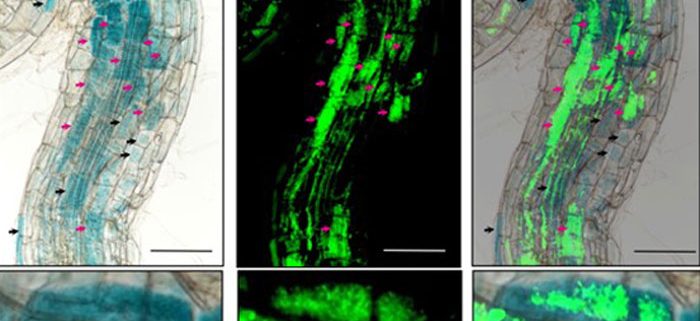A sensor for inhibition of symbiosis when phosphate is plentiful
Liao et al. describe a sensor complex that coordinates phosphate signaling and arbuscular mycorrhiza symbiosis.
Background: Arbuscular mycorrhiza (AM) symbiosis is a widespread phenomenon in terrestrial plants that improves the acquisition of mineral nutrients. Successful symbiosis with AMs enhances the tolerance of host plants to biotic and abiotic stresses. Unfortunately, AM symbiosis usually occurs only under phosphate (Pi)-deficient conditions. This limits the application of AM fungi in modern agriculture. It is important to understand how AM symbiosis in plants is inhibited under Pi-replete conditions.
Question: What is the mechanism behind the inhibition of AM symbiosis by replete Pi in plants?
Findings: We conclude that two Pi-signaling components, SPX and PHR, form a Pi-sensing module to coordinate AM symbiosis under different Pi conditions. Multiple PHR proteins can be activated in the arbuscule-containing cells to promote the expression of genes essential for AM symbiosis. SPX acts as the major repressor and suppresses PHR via physical protein binding in response to high Pi levels. Therefore, the SPX-PHR module represents the integration of Pi signaling and AM symbiosis.
Next steps: The next important step is to apply our findings to breeding new varieties with the stronger ability to form AM symbiosis in modern agriculture.
Dehua Liao, Chao Sun, Haiyan Liang, Yang Wang, Xinxin Bian, Chaoqun Dong, Xufang Niu, Meina Yang, Guohua Xu, Aiqun Chen, Shuang Wu. (2022). SlSPX1-SlPHR complexes mediate the suppression of arbuscular mycorrhizal symbiosis by phosphate repletion in tomato. https://doi.org/10.1093/plcell/koac212




